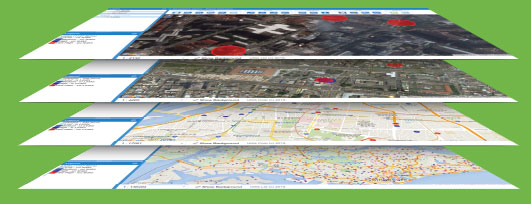Trending Tech Company - Utilis
Published on by Vishakha Rajput, Previous COO The Water Network at AquaSPE AG in Technology
Utilis analyzes satellite imagery to detect leaks and non -revenue-water.
 Leak detection that covers thousands of square kilometers at once. The leaks are displayed in user friendly GIS reports including street locations, with great accuracy, saving significant labor associated with finding leaks with current methods.
Leak detection that covers thousands of square kilometers at once. The leaks are displayed in user friendly GIS reports including street locations, with great accuracy, saving significant labor associated with finding leaks with current methods.
Utilis uses spectral aerial imaging – taken from satellite mounted sensors – to spot leakage in underground distribution pipes. The raw imagery is then overlaid on GIS systems and is processed by Utilis’ unique algorithms. The Utilis algorithm detects drinking water, by looking for a particular spectral “ signature” typical to drinking water. Eventually, the user is presented with a leakage graphic report overlaid on a map with streets, pipes and size information.
Utilis' recent awards:
- 'Utilis' takes the top water innovation prize at Imagine H2O for tech that finds leaks underground.
- Utilis received an Innovation Award from Piers Clark, Chairman of Isle Utilities, during Innovative Technologies Competition at Singapore International Water Week 2016.
- Annual Conference and Exposition (ACE16), held by the American Water Works Association (AWWA) announced top 10 technologies and breakthroughs, with Utilis among them.
 The Utilis service is provided periodically, on a monthly, quarterly or half-year basis.
The Utilis service is provided periodically, on a monthly, quarterly or half-year basis.
At the beginning of each period, Utilis presents a graphic and/ or tabular Leakage Report containing location and estimated size of suspected leaks. The information is displayed on top Google Maps or Google Satellite layer.
Utilis periodic Leakage Reports benefits include: early leaks detection and repairs verification, that significantly contribute to NRW reduction.
Repetitive update of the leakage reports improve accuracy of findings, thus enabling composition of more efficient operational work-plans.
The technology’ s process includes four stages:
Stage 1: Spectral satellite image acquisition - A raw satellite spectral images of the area are acquired and the microwave satellite images are received as the input.
Stage 2: Radiometric corrections - Utilis uses remote sensing of subterranean water leakage based on a primary algorithm that detects underground leaks through the analysis of micro spectral satellite imagery. Microwaves travel through atmospheric interferences such as clouds, dust particles and aerosols. They are particularly useful for water detection, as water exhibits a high value of relative dielectric permittivity, therefore enabling the discovery and measurement of water in soil. The core technology of Utilis exploits these physical findings and then removes undesired " noise" reflections of buildings, vegetation, lakes, swimming pools, drainage assets, and other topographical features.
Stage 3: Algorithmic analysis - Utilis searches for the spectral ' signature' of fresh water ( a dielectric constant). Algorithmic analysis estimates the size of the leak (from as little as 0.03 gallon per minute), with the ability to detect non- revenue water leaks between 6- 9 feet underground. At this depth, non- revenue water doesn't usually exist without a reason, and after filtering this information allows for an accurate assessment of non-revenue water leaks.
Stage 4: Web-based app and intuitive UI - the output is a GIS layer in the standard ESRI application of the entire water system’s suspected leaks. Each leak is represented by a circle which is called “buffer zone” and a color. The buffer zone shows the location of the leak within a 300 feet diameter circle. The color gives information of the intensity of the leak. Each leak is being represented with a number of an estimated intensity (in gpm) and is colored with one of the following colors: light blue, dark blue, orange and red. A light blue leak has low intensity as low as 0.03 gpm and red leak has high intensity as high as 15 gpm. Hence, utilities and municipals can prioritize and decide to which leaks they should send a team first and to which geographical cluster.
The Water Network team had the pleasure to interview Lauren Guy, CTO & Co- Founder of Utilis Ltd.
Read the interview here.
Media
Taxonomy
- GIS & Remote Sensing Technology
- GIS
- Leakage Detection
- Leakage
- GIS Spatial Analysis
- GIS & Remote Sensing
- Satellite